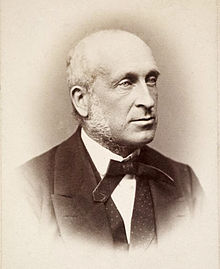Sejm of the Estates
Sejm of the Estates Postulate Sejm Sejm stanowy Stany galicyjskie Sejm postulatowy | |
|---|---|
| Type | |
| Type | Unicameral |
| Seats | varied between 41 (1834) and 289 (1782) |
| Elections | |
Last election | 1845 |
| Meeting place | |
| Lemberg (Lviv, Lwów) | |
The Sejm of the Estates
The estates in question were primarily clergy and szlachta (nobility), with a token townsfolk representation. Peasantry was not represented.
History
Postulate Sejm


Parts of the
Estates of Galicia
Soon afterward, in 1817,
Excepting the establishment of the
Composition and organization
The number of the members was not fixed; it varied from over 200 (with 289 in 1782 and 213 in 1817) to as low as 41 (in 1834); in most years the Sejm had averaged 60 to 80 deputies.
The Estates met for a few days each year, with some exceptions: they were not convened in the years 1831 and 1832 (time of the
The Estates had no dedicated location to meet.[13] To evade Emperor's limitation on the proceedings duration and topics to be discussed, the members met before each session at various locations.[14] While in session, they met at the former monastery buildings, owned by the University of Lwów.[14]
Competences
Just like the preceding Postulate Sejm, the Estates had very limited competences: they met to hear the Emperor decrees, distribute tax assessments, grant Galician titles of nobility to individuals who already held similar titles elsewhere in the Austrian Empire, prepare petitions and appeals to be heard by the Emperor.[9] Polish 19th-century historian, Henryk Schmitt, wrote that the role of the Estates was to listen to the government decisions, and file petitions, which often waited for the royal reply for several years; he thus notes that the Estates were powerless, a "comedy", their only purpose being to fulfill the Congress of Vienna requirement of having some form of "national representation" on the lands of the Austrian partition.[15]
See also
References
- ^ ISBN 978-0-7818-0637-4. Retrieved 13 August 2011.
- ^ Bronisław Łoziński (1905). Galicyjski sejm stanowy, 1817–1845. Ksiȩg. H. Altenberga. p. 20. Retrieved 1 November 2012.
- ^ Kwartalnik architektury i urbanistyki. Państwowe Wydawn. Naukowe. 1973. p. 209. Retrieved 1 November 2012.
- ^ Walerian Kalinka (1898). Galicya i Kraków pod panowaniem austryackiem. Spółka Wydawnicza Polska. p. 268. Retrieved 1 November 2012.
- ^ Lewinski-Corwin, Edward H. (1917). The political history of Poland. New York: Polish Book Importing Co. pp. 531.
- ^ Lewinski-Corwin, Edward H. (1917). The political history of Poland. New York: Polish Book Importing Co. pp. 529.
- ^ a b c Władysław Smoleński (1919). Dzieje narodu polskiego. Gebethner i Wolff. pp. 408–409. Retrieved 31 October 2012.
- ISBN 978-83-7059-052-9. Retrieved 1 November 2012.
- ^ ISBN 978-0-7818-0637-4. Retrieved 13 August 2011.
- ^ ISBN 978-0-7818-0637-4. Retrieved 13 August 2011.
- ISBN 978-0-7818-0637-4. Retrieved 13 August 2011.
- ^ ISBN 978-0-7818-0637-4. Retrieved 13 August 2011.
- ^ ISBN 978-0-7818-0637-4. Retrieved 13 August 2011.
- ^ ISBN 978-0-7818-0637-4. Retrieved 13 August 2011.
- ^ Henryk Schmitt (1894). Dzieje porozbiorowe Polski. Nakładem Towarzystwa óswiaty ludowej. p. 340. Retrieved 31 October 2012.
